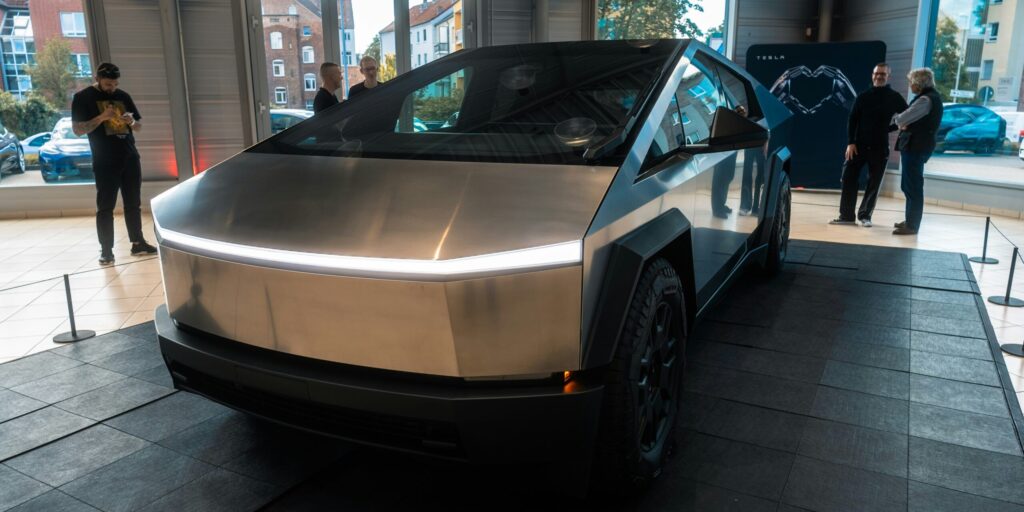In June 2025, Tesla took the spotlight at the Global Tech Expo in San Francisco, unveiling its most advanced artificial intelligence (AI) technology aimed at revolutionizing the future of autonomous driving. CEO Elon Musk presented the company’s latest breakthroughs in self-driving vehicles, showcasing a range of new features designed to enhance the safety, efficiency, and adaptability of Tesla’s fleet.
The Evolution of Tesla’s Full Self-Driving (FSD) Technology
Tesla’s Full Self-Driving (FSD) feature has been a major part of the company’s ambitions to lead the electric vehicle (EV) market. First introduced in 2016, FSD has undergone numerous updates, including features like Autopilot, Navigate on Autopilot, and Smart Summon. Each of these updates improved Tesla’s AI algorithms, enabling its cars to navigate on highways, change lanes autonomously, and park themselves.
In June 2025, however, Tesla reached a new milestone with the introduction of a highly sophisticated version of FSD. Unlike previous iterations, which required human supervision, the new version of FSD can now operate fully autonomously in a wide range of driving environments, including complex urban settings. This system is powered by Tesla’s cutting-edge machine learning and neural network algorithms, which have been trained on billions of miles of real-world driving data.
At the 2025 Global Tech Expo, Musk demonstrated how the updated AI system can navigate tight city streets, manage unpredictable road conditions, and even communicate with traffic lights and other road infrastructure. Musk emphasized that this is a significant leap forward in autonomous driving, pushing Tesla closer to achieving fully autonomous vehicles.
Key Features of the 2025 Tesla AI System
One of the most significant advancements Tesla introduced in its latest vehicles is a feature called “Driver-Intuition Mode.” This mode allows the vehicle to adjust its driving style based on the preferences of the driver. For instance, some drivers may prefer a more aggressive driving style, while others may want a smoother, more cautious approach. Tesla’s AI now learns these preferences and tailors the vehicle’s driving behavior accordingly.
Another important feature showcased at the expo is Tesla’s real-time predictive navigation system. Powered by AI, this system monitors traffic patterns, road closures, and weather conditions in real time, making routing suggestions and adjustments to keep the vehicle on the fastest, safest path. In cities like San Francisco, where traffic congestion and changing road conditions are a constant challenge, this system is expected to provide a much more seamless driving experience for Tesla owners.
Additionally, the 2025 Tesla vehicles come equipped with upgraded sensors, including advanced LiDAR (Light Detection and Ranging) technology. Unlike traditional cameras and radar sensors, LiDAR can accurately measure the distance between objects, providing Tesla’s cars with a clearer understanding of their surroundings, even in low-visibility conditions like fog, rain, or snow.
Implications for the Future of Autonomous Driving
The announcement of Tesla’s new AI-driven features has profound implications for the future of autonomous driving. Musk has long been a proponent of self-driving cars, frequently stating that they could drastically reduce traffic accidents and fatalities, cut down on traffic congestion, and make transportation more efficient. As of 2025, Tesla’s new autonomous technology could bring these promises closer to reality.
However, this shift toward fully autonomous vehicles also raises questions about the broader implications for the automotive industry and society as a whole. For one, the widespread adoption of self-driving cars could lead to significant job displacement, particularly for truck drivers, delivery drivers, and taxi drivers. According to some estimates, autonomous vehicles could displace millions of jobs in the transportation sector alone.
Furthermore, the regulatory environment surrounding autonomous vehicles is still in its infancy. While Tesla has made significant strides in developing autonomous technology, governments around the world will need to create regulations to ensure that these vehicles are safe for public roads. In the U.S., the National Highway Traffic Safety Administration (NHTSA) and other regulatory bodies have yet to establish clear guidelines for the safe deployment of fully autonomous cars.
Despite these challenges, Tesla’s AI advancements have already sparked interest from other automakers. Companies like Waymo, Uber, and General Motors are all working on their own autonomous driving technologies, but Tesla’s head start in AI research and development positions the company as a key player in the autonomous vehicle market.
The Economic Impact of Tesla’s AI Innovations
As Tesla continues to push the boundaries of AI and self-driving technology, its market share in the EV sector continues to grow. In 2025, Tesla’s stock has seen a significant uptick, largely driven by the optimism surrounding its self-driving capabilities. In fact, analysts are projecting that Tesla could dominate the global EV market for years to come if its AI advancements continue to outperform competitors.
Moreover, the widespread adoption of AI-powered vehicles could drive growth in other industries. For instance, improvements in AI navigation and real-time traffic management systems could be leveraged by cities to optimize traffic flow, reduce congestion, and lower emissions. The AI algorithms that Tesla is developing could also have applications in fields like logistics, urban planning, and even agriculture.
The Road Ahead
While Tesla’s new AI-driven features represent a major leap forward in autonomous driving, the road to fully autonomous vehicles is far from over. Tesla’s vehicles will continue to rely on regular software updates and real-time data collection to refine their driving algorithms. And although the technology is improving rapidly, full autonomy may still be years away.
In the meantime, Tesla’s 2025 AI features represent a significant step in the journey toward safer, more efficient driving. As the company continues to innovate, it will be exciting to see how the world’s roads evolve in response to the rise of autonomous vehicles.


